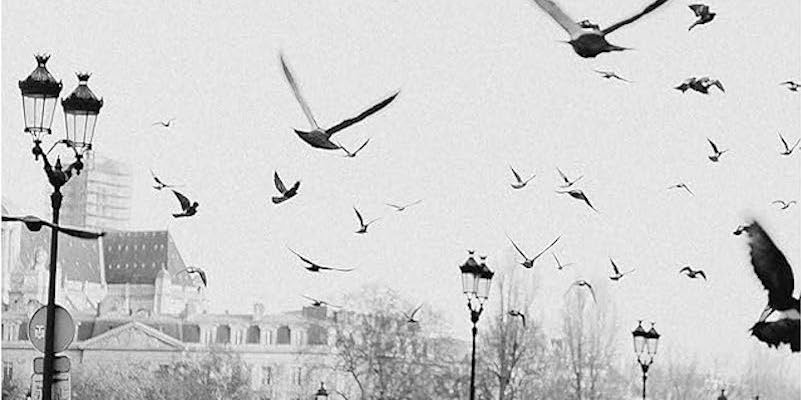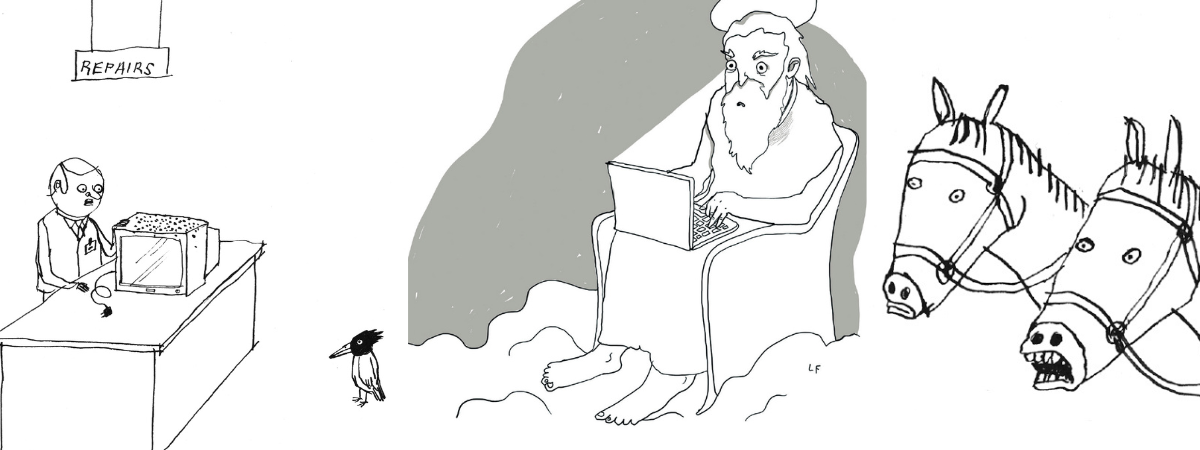In the town, no one has a shadow. That is because the people have their shadows stripped at birth, or else leave them at the impenetrable twenty-six-foot-high wall that surrounds the town, guarded by a gruff Gatekeeper. The clocks have no hands here, but seasons do pass; in the winter the local population of unicorns dies off, and the Gatekeeper burns their carcasses in a pit, the smoke visible for miles. The town is serene but somehow vacant, with its bland food, lack of music, dreamless sleeps.
Seasoned readers of Haruki Murakami will be familiar with the imaginary town at the centre of his new novel, The City and Its Uncertain Walls. It appeared in Hard-Boiled Wonderland and the End of the World (1985; 1991 in English), the novel he wrote before his big breakthrough, Norwegian Wood (1987; 1989). Now, as Murakami describes in an afterword, he has returned to it, sensing in it something primordial to his art, something unresolved. (A new translation of Hard-Boiled Wonderland by Jay Rubin, following the Alfred Birnbaum original, is due out next month.)
Hard-Boiled Wonderland intercut events in the town with a far-flung science fiction narrative too byzantine for capsule exposition here; but in this sequel of sorts, smoothly translated by Philip Gabriel, it forms the mysterious core of a quiet, down-to-earth story, so restrained that it too hovers on the edge of non-existence. The novel begins with its nameless male narrator, aged seventeen and in love with an enigmatic sixteen-year-old girl who introduces him to the concept of the town. What she calls the “real her” lives there, she says, while the girl he knows is “a mere stand-in”, a shadow banished to the world beyond the walls. Their love is cemented on an obsessive collaboration as they flesh out the details of the town, taking breaks only for the occasional kiss. Their love is pure, but not strong enough to break through a sense of sadness about the girl, her deep feeling of worthlessness: “If only I could hold you more tightly and say more encouraging words”, says the boy, “the most apt, right words that would break the spell.” Certain allusions make us suspect some childhood abuse has instilled a feeling of dissociation in the girl (“When I was three, I was forced to leave my body”). Only in the town does she find peace, for “the me that lives there doesn’t have dreams, and doesn’t weep”.
When the girl disappears abruptly from his life, the bereft narrator finds himself transported to the town. His shadow is stripped away by the Gatekeeper and he gets a job as a Dream Reader, a privileged position in which (bear with me) he reads old dreams stored in egg-shaped vessels in the library, also familiar from Hardboiled Wonderland – presumably the dreams the townspeople don’t experience themselves. It is in the library that the boy re-encounters his love, the so-called “real her”, but she doesn’t remember him: the townspeople have no knowledge of what we would call the real world. For her, perhaps, the town is a kind of paradise – secure, balanced, predictable, a place where all darkness has been banished, all contradictions eliminated. But the narrator senses something incomplete, if not sinister, in a place where “feelings are not just useless but harmful”. He arranges for the liberation of his shadow, which is being held in captivity, but for all his misgivings he cannot quite bring himself to leave the girl. Just being close to the numb, hollowed-out semblance of his love is better than losing her for ever.
Then, just as suddenly, he is back in our world – middle-aged and working for a book distribution company. His early dreams of literary ambition have drifted off without a trace and, as if following some messianic message, he is gripped by a mysterious urge to upend his life, move to a mountainous inland region and work at a small library. He secures the position of head librarian in a nameless town, taking over from a man named Mr. Koyasu, who, eccentrically for this provincial milieu, wears a skirt and a beret – and who turns out to be dead, a ghost only the narrator and a handful of others can see. Meanwhile, the narrator begins a calm, sexless affair with a local coffee-shop owner, a challenge for someone who feels, following the disappearance of his childhood love, that a part of his heart has been “irradiated, burned out”. But, following the disappearance of a young customer at the library, he must decide whether to stay in this world or to find his way back to the other one that has haunted him all his life.
Ghosts, unicorns, hidden realms – The City and Its Uncertain Walls might sound like heady, fantastical stuff. But these are just colourful touches, applied to add contrast to a minimalist story of lost love that doubles as a stress test of the porous wall between artifice and reality. The blueprint of the novel is impressive, and when Haruki Murakami does allow himself to be specific about his nameless characters, the results can be touching. But more generally the novel feels serene in the same bloodless way that life does in the imaginary town. The pages turn easily on scenes of undifferentiated dialogue that preserve the reader from intimacy, and the story advances with such overbearing authorial design that we feel estranged from any real emotional investment. Perhaps there is a method to the vagueness, a comment on how some of us move through the world like anonymous shadows, seeking a body that will give us presence and shape. But over hundreds of pages the effect can be drowsy. Like the narrator, there is only so long we care to inhabit a frictionless environment before we want to break back out into a less organized, more messy and contradictory world.
Michael LaPointe has written for the Atlantic and the New Yorker. His debut novel, The Creep, was published in 2021
The post Dreamless sleeps appeared first on TLS.

 By Times Literary Supplement | Created at 2024-11-20 16:49:31 | Updated at 2024-11-21 14:06:33
22 hours ago
By Times Literary Supplement | Created at 2024-11-20 16:49:31 | Updated at 2024-11-21 14:06:33
22 hours ago








